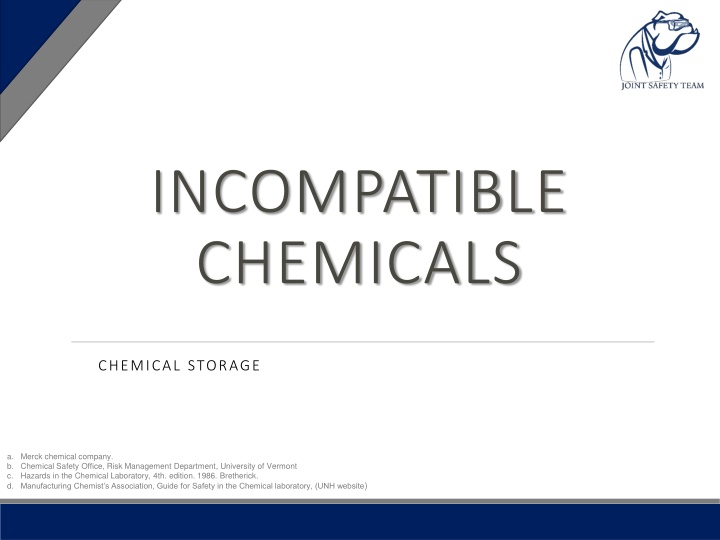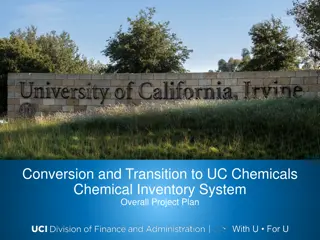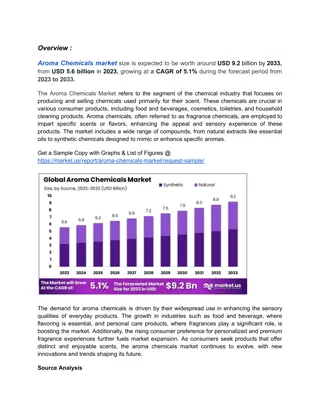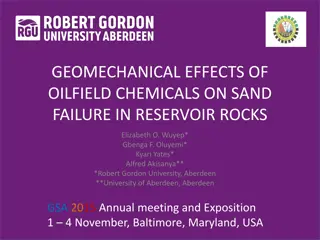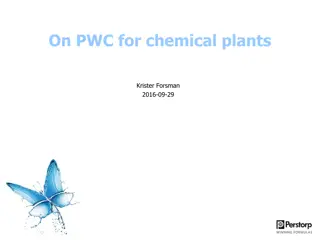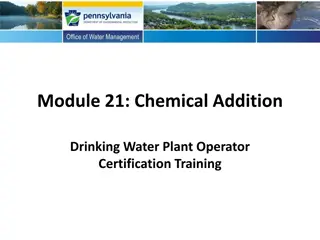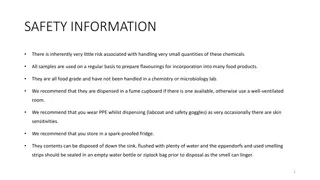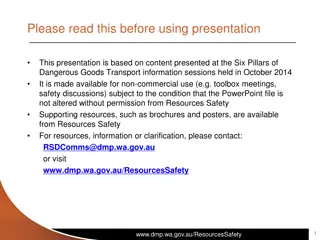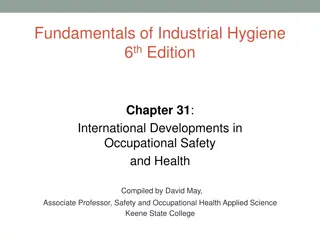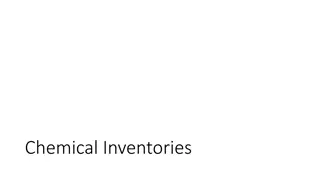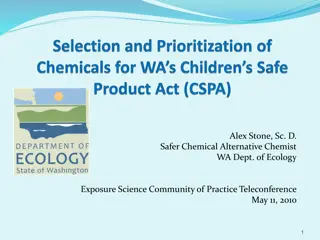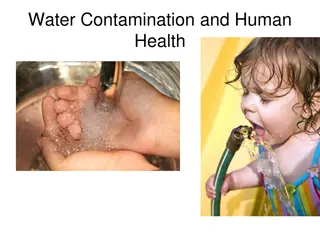INCOMPATIBLE CHEMICALS
The provided information outlines incompatible chemicals and proper storage procedures to prevent hazardous reactions in a laboratory setting. It covers classes such as acids, metals, organics, and non-metal inorganics, highlighting specific chemical combinations to avoid. Understanding these guidelines is crucial for maintaining a safe working environment and preventing accidents.
Download Presentation

Please find below an Image/Link to download the presentation.
The content on the website is provided AS IS for your information and personal use only. It may not be sold, licensed, or shared on other websites without obtaining consent from the author.If you encounter any issues during the download, it is possible that the publisher has removed the file from their server.
You are allowed to download the files provided on this website for personal or commercial use, subject to the condition that they are used lawfully. All files are the property of their respective owners.
The content on the website is provided AS IS for your information and personal use only. It may not be sold, licensed, or shared on other websites without obtaining consent from the author.
E N D
Presentation Transcript
INCOMPATIBLE CHEMICALS CHEMICAL STORAGE a. Merck chemical company. b. Chemical Safety Office, Risk Management Department, University of Vermont c. Hazards in the Chemical Laboratory, 4th. edition. 1986. Bretherick. d. Manufacturing Chemist s Association, Guide for Safety in the Chemical laboratory, (UNH website)
Class: Acids Acetic Acids - HNO3, MnO4-, ROHs, NH4NO3,ROOR potentially explosive peroxides Use a blast shield if generating peroxy acetic acid for a reaction HNO3 - CrO3, CaCO3, AcOAc, AcOH, organic materials (carbonyl compounds, aromatic compounds, bases) can react violently generating gasses and explode especially in a sealed container do not use aqua regia to remove these compounds H2SO4 - ClO3-, ClO4-, MnO4- oxo acids decompose rapidly, react violently, and accelerate fires Bubbling Aqua Regia
Class: Metals Exposure to H2 gas may explode/catch fire in air eg. Palladium on Carbon Store air and water free Alkali Metals - O2, halo-alkanes, H+, ROHs, halogens (Br2), H2O use a yellow class D fire extinguisher Al/Zn - H2O, Ox, ROOR, halo-alkanes, H+ and bases keep out of base bath! Class D pyrophoric metals fire extinguisher Aluminum metal plus hydroxide bases generates H2 gas
Class: Organics Acetaldehyde -AcOH, AcOAc exothermic polymerization reactions possible Acetone - HNO3, H2SO4, H2O2 acetone peroxide is highly unstable and explosive keep strong acids out of acetone waste Anilines - HNO3, H2O2 trinitroaniline is strongly oxidizing and explosive similar to picric acid and TNT Acetone peroxide monomer
Class: Non-metal inorganics Br2/Cl2 - butadiene, benzene, metals, reductants can spontaneously ignite flammable materials store in a cool, well ventilated, dark place away from metals (fridge in secondary containment) Phosphorous - Ox, oxygen and sulfur compounds P2O5/P4O10 and H2O react violently to produce phosphoric acid PR3 burns spontaneously with oxoacids store air and water free Hydroscopic Peroxides - H+, AcOAc, NH3, metals violent explosion with PbOx and PbSx Highly unstable avoid shock, store in cold dark place
Class: Non-metal inorganics Nitrates/Nitrites/(Per)Chlorates - H+, reductants, NH4+ NH4NO3 is highly explosive NH4ClO4 explodes upon heating Hydrazines - Ox highly exothermic N2 production Keep damp in aq. solutions Unstable to heat and shock when dry! Azides -H+, CS2, heavy metals Pb(N3)2 is a shock sensitive HN3 is a volatile and highly toxic explosive Cyanides - H+ toxic HCN gas! Store away from acids, maintain basic solutions Sodium Hypochlorite (Bleach) - NR3, ROHs, acetone, H2O2, H+ produces flammable and noxious gasses Cl2, HClO, O2
